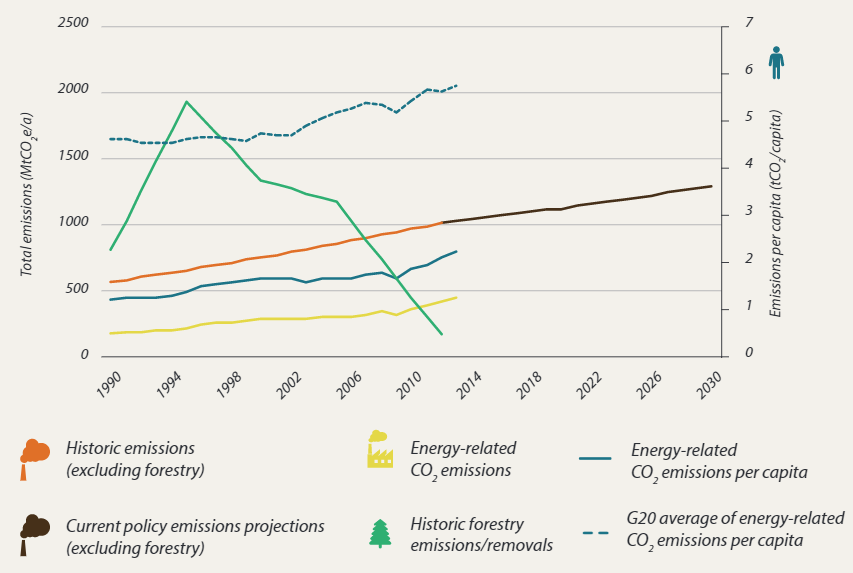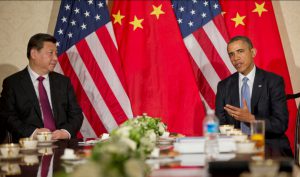Leaders from the G20, the world’s nineteen largest economies plus the European Union, have arrived in the city of Hangzhou, eastern China, for the group’s annual summit with climate change high on the agenda.
The newly-reupholstered city provides a serene backdrop for the gathering but the need for the group to tackle global carbon emissions, of which it contributes 75%, is increasingly urgent, says a new report by Climate Transparency, a German-led coalition of experts.
In recent years China has led on climate action by promising to cap its carbon emissions and wean itself off coal but all countries must improve in a range of areas including investing in renewables, reducing energy and carbon intensity (the amount of energy and carbon consumed per capita) and eliminating fossil fuel subsidies, according to the report entitled Brown to Green: Assessing the G20 transition to a low-carbon economy.
Between 1990 and 2013 energy-related emissions within the group increased 56% but growth has slowed in recent years.
“The G20 has proven that it can be nimble, and take action on economic issues, so we are looking to these countries to do the same for the climate,” said Alvaro Umaña, co-chair of Climate Transparency and former minister of environment and energy of Costa Rica.
Whilst the report notes the importance of switching from coal and other fossil fuels to ‘green’ energy sources, the profiles of Latin American member countries show they face bigger challenges. Land use change, especially agriculture and deforestation, are among the leading sources of emissions in Brazil, while Mexico and Argentina need to increase the share of renewables in the energy mix, the report says.
China’s role
G20 host China, which is responsible for 24% of global carbon emissions, scored particularly highly in the report’s assessment in terms of its investment in green energy systems. But despite dramatic reductions in the energy intensity of the economy, the high proportion of coal in energy generation means there is still much work to do.


China generates 68% of its energy from coal-fired power, double the G20 average of 34%. And while the world’s highest emitter is slowly shifting away from coal at home, it is still investing in a number of coal projects overseas. These figures leave the G20 well short of reaching the targets set out in the Paris Agreement necessary to limit global warming to 2C.
The comparatively low level of energy generated by oil and gas in China means its share of renewables is also well above the G20 average at between 15-20% of the mix.
Latin American challenges
Latin American G20 members Brazil, Mexico and Argentina currently have carbon and energy intensity levels below the group’s average, but seem to be moving in the wrong direction. In addition to these challenges, the region’s biggest economy, Brazil, needs to reduce its emissions from land use change from the agriculture sector, which in recent years has expanded in order to meet Chinese demand for soya.
Brazil has made significant gains in curbing carbon emissions from forest loss, which now account for 28% of GHGs and since 2011 have been overtaken by the energy- sector (30%). Methane emissions make up a further 28%.

Along with newly confirmed Brazilian president Michel Temer, Argentine president Mauricio Macri and Mexico’s Enrique Peña Nieto will meet separately with China’s president Xi Jinping on the sidelines of the G20 summit. Macri and Peña Nieto do so having recently launched bids to attract investment in their countries’ renewables sector, which have accounted for diminishing shares in their energy mixes.
In 2014, Mexico approved the Energy Transition Law, which aims to generate 35% of energy from clean sources by 2024. In Argentina, President Mauricio Macri recently launched RenovAr, his renewable energy plan which targets 20% clean energy by 2025.
Mexico and Argentina have similar emissions profiles with energy-related emissions steadily rising. Though they generate only a minimal amount of energy from coal (at 5% and 1% respectively), the two countries’ heavy use of oil and gas means the carbon intensity of the sector sits close to the G20 average.








